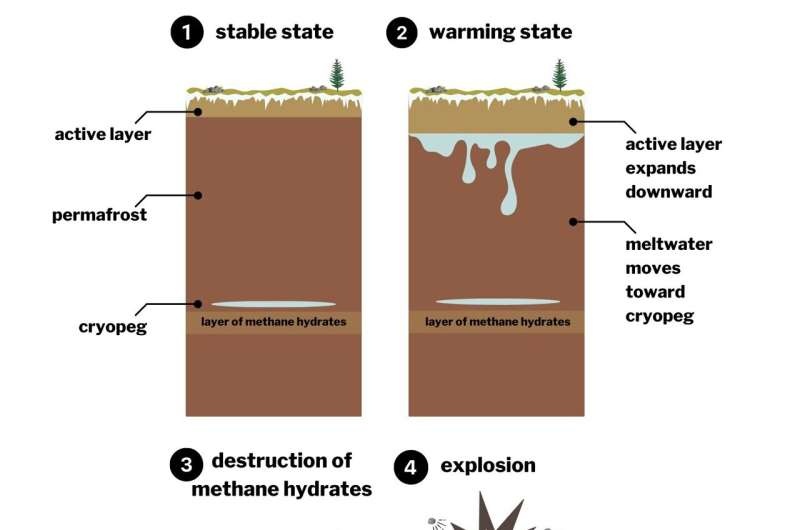Researchers have uncovered a new explanation for the mysterious craters that have been appearing in the Siberian permafrost over the past decade. The study delves into the unique geological conditions and the impact of climate change that have led to these explosive events.

Deciphering the Impenetrable Enigma of Permafrost
The first of these craters was found in 2014 on the Yamal Peninsula, Siberia. In the past decade, more have been found, to scientists’ puzzlement.
Previous hypotheses have suggested that the explosions resulted from a release of methane gas in underground ice caused by thawing permafrost or due to the ignition of gases escaping from near-surface deposits and reservoirs. Yet, the recently published report done by a team of researchers from the University of Cambridge as well as the Spanish National Research Council provides an alternative but equally captivating scenario.
According to the researchers, it is the area’s distinctive geology colliding with climate change that leads to these blasting events. This comes down to how melting permafrost interacts with the underground layers of salty water (cryopegs), and the methane hydrates beneath them.
The Physics of the Blast
Permafrost on the Yamal Peninsula — thick, clayey soil that is permanently frozen — creates an osmotic barrier between different geological strata. With increasing temperatures, the active layer of soil sitting above the permafrost thaws and starts to creep downwards, working its way into the high-salinity water layers – cryopegs.
The pressure within the cryopegs increases due to an increased influx of osmotically pressured meltwater. With the pressure rising, fractures develop in the soil, running from the cryopegs towards the surface. This change in pressure is enough to break apart the methane hydrates located below these cryopegs, which are solid forms of methane and water.
Those methane hydrates are ruptured and methane gas is released which causes a physical explosion too, generating the craters we see on Yamal Peninsula. There is an estimate by the researchers that this process can take decades to see through and somewhat coincide with the observed acceleration in climate warming since 1980.
Conclusion
The study provides a convincing account for the riddles of Siberian permafrost craters and points to an intertwined texture between its uncommon geology and how the region experiences climate change. By understanding the intricate mechanisms, scientists may be able to predict and ideally control when methane — a powerful heat-trapping gas that has been gaining attention as a contributing factor to climate change in recent years — is released into our atmosphere. According an important reminder as there is still much of the dynamic earth that we do not understand and must continue to research and collaborate to find out.
